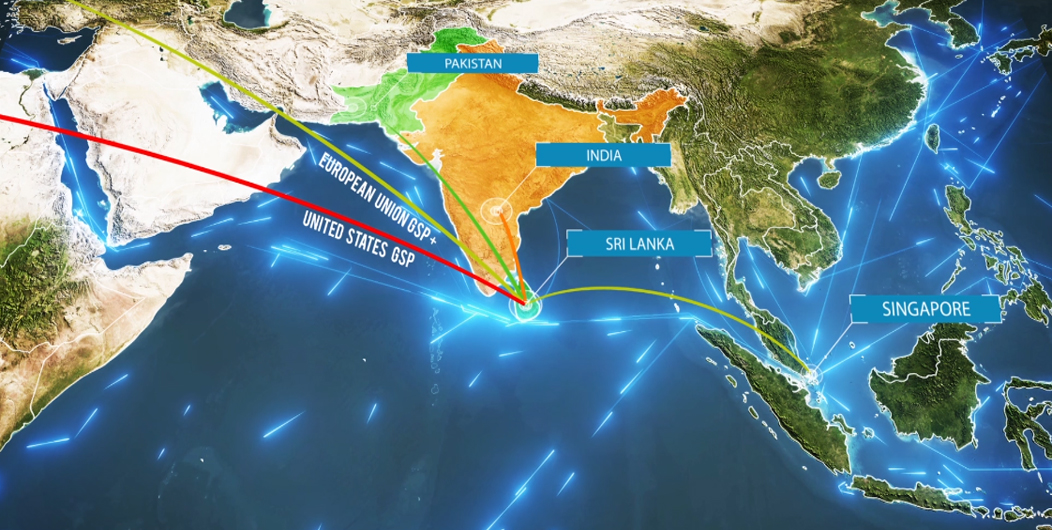
Sri Lanka’s abundance of natural resources, our historical position as a global trading centre, and the availability of knowledge and technology, position Sri Lankan exporters in an enviable and an unrivalled position in comparison to the manufacturers, suppliers, and exporters in the region.
The sustained market for local agricultural exports including Ceylon Tea, natural rubber and coconut-based products and rising demand for Sri Lankan apparel, knowledge services, and engineering services provide Sri Lankan exporters with new potential to conquer new markets and explore new horizons.
Despite changing trade trends and fashion demands, Sri Lankan Apparel manufacturers have continued to sustain the global interest in the industry, that reinvented Sri Lanka as an ethical, sustainable and high-end sourcing destination for apparel sourcing. Although the lack of a high-quality fabric manufacturing industry has hindered the potential of the industry’s rapid expansion, the Sri Lanka Apparel industry is slowly moving towards the manufacturing and processing industry of textiles and fabrics.
Sri Lanka continues to remain among the top five tea producing countries in the world. Although China, India, and Kenya are the largest tea exporters based on volume, Sri Lanka is the third largest tea exporter by USD value, exporting USD 1.4 Billion worth of Ceylon Tea to the world. Ceylon Tea is celebrated for its unique flavour, variety, and quality. The country’s tea exports are governed by Black Tea and are yet to exploit the rising global demand for Green Tea, Organic Tea versions and herbal and fruit infusions to the fullest.
Spices had been Sri Lanka’s trump card since the 15th Century. The country has the global monopoly for True Cinnamon ( Cinnamomum zealanicum) widely known under the geographical indication of Ceylon Cinnamon, which contains smaller amounts of coumarin compared to cassia cinnamon. Although the country has an export potential over USD 290 million, the actually exports amount to only half of the potential due to the shortage of cinnamon production.
Shortage of production and supply is a challenge faced by many spice exporters in the country. Despite the unique geographical indication assigned to Ceylon Spices, the spice cultivators in Sri Lanka is yet to meet the supply of rising global demand.
Declining production of latex is a challenge faced by the local rubber industry. Natural rubber production in Sri Lanka has declined from 155000 Mt produced in 1967 to 82600 Mt in the year 2018. Sri Lanka with over 140 years of history as the pioneer rubber grower in the world outside of South America, was in fourth place in the world as a natural rubber producer in the late 1960s but is at the 12th position currently, overtaken by countries which adopted rubber cultivation at a later period. Over 70% of the total rubber and latex production of the country is converted to value-added products while a considerable amount of dry rubber and latex have been imported to meet the production shortfall.
Sri Lanka’s emergence from a rural agriculture-based economy to a more urbane industry-based economy has seen the rise of a knowledge service industry which provides ICT and BPM services to a range of global companies.
A sophisticated telecommunication infrastructure, highly qualified professionals, and the presence of global leaders in ICT and BPM has flamed the country’s rising popularity as a more nimble and technologically advanced outsourcing destination.
Situated at the crossroads of marine navigation in the Indian Ocean, in close proximity to many rising economies and markets in Asian- Pacific and African regions, Sri Lanka continues to be an important and lucrative sourcing destination for many industries around the world.
Expansion at Colombo and Hambantota Ports, development of inland air travel and road networks, and the rapid expansion of manufacturing infrastructure in form of export processing zones across all regions of Sri Lanka have also boosted the country’s industrial and manufacturing potential.
The country’s rising importance as a logistic hub has also provided multiple opportunities for Sri Lankan marine engineering service providers to expand boat and shipbuilding and drydocking capacities for local and export markets.
In addition, Sri Lanka also has the potential to develop a lucrative marine service sector, for providing auxiliary services to shipping lines, that use Colombo and Hambantota ports as a transhipment and an entrepot hub.
In view of Sri Lanka’s increasing export potential Sri Lanka Export Development Board (SLEDB) performs multiple roles in export development, promotion, and facilitation as a catalyst and promoter by;